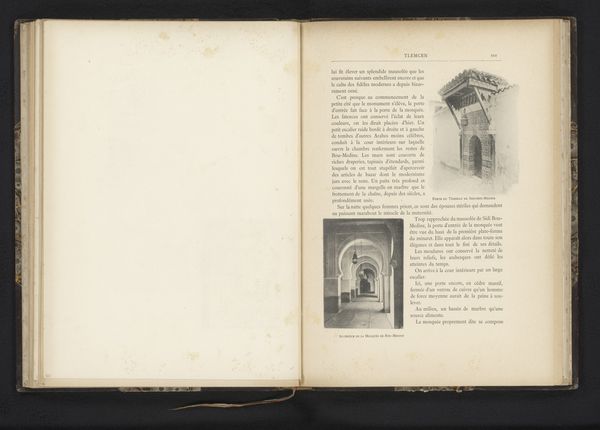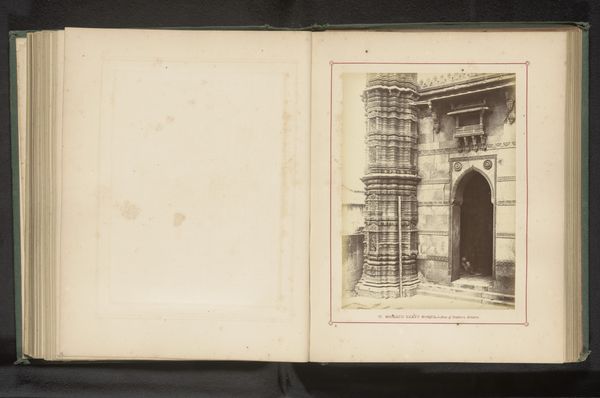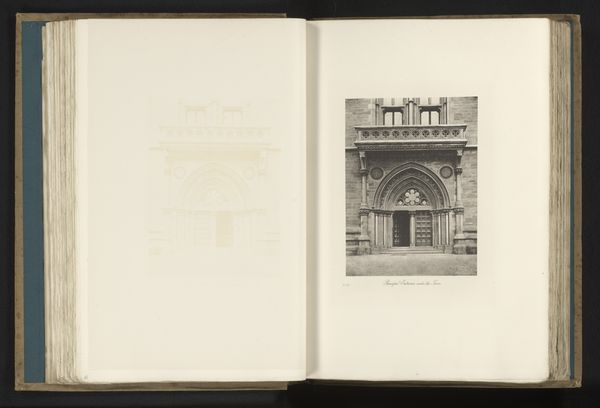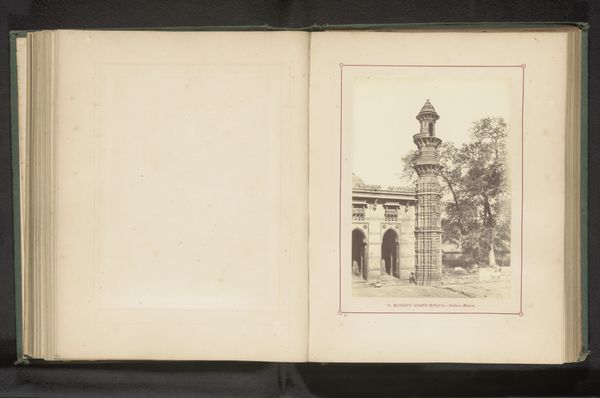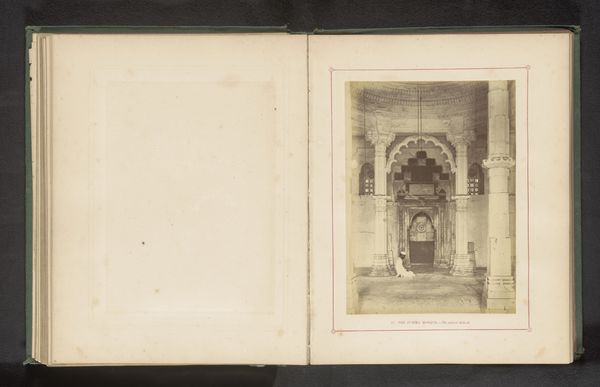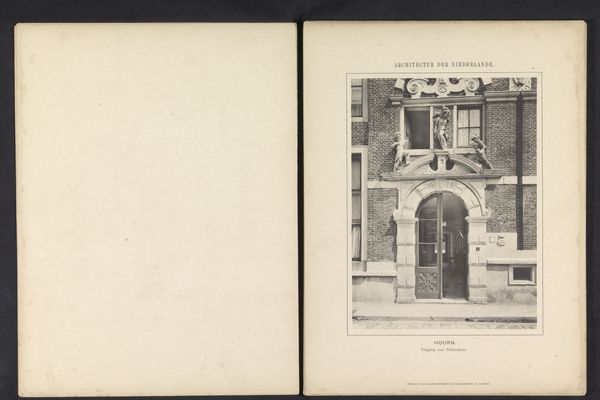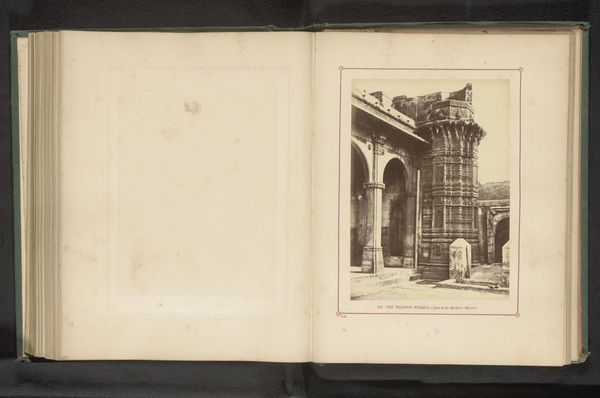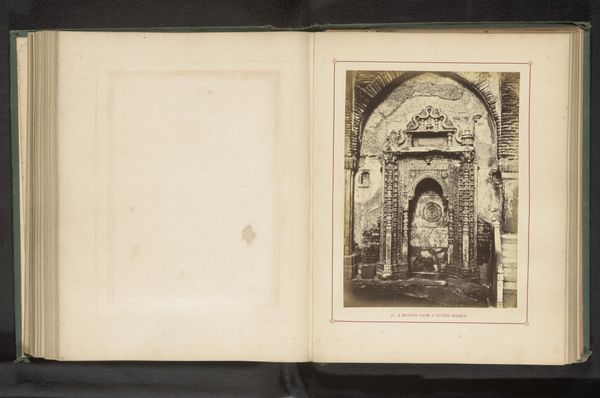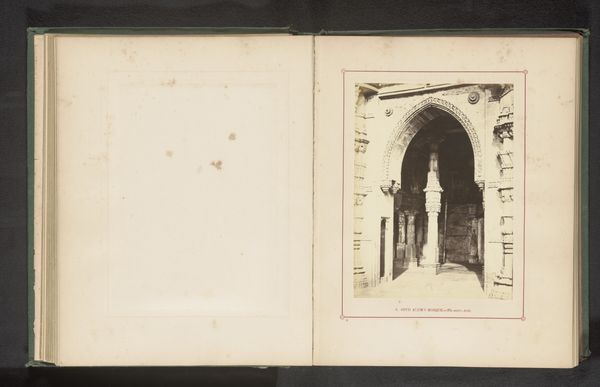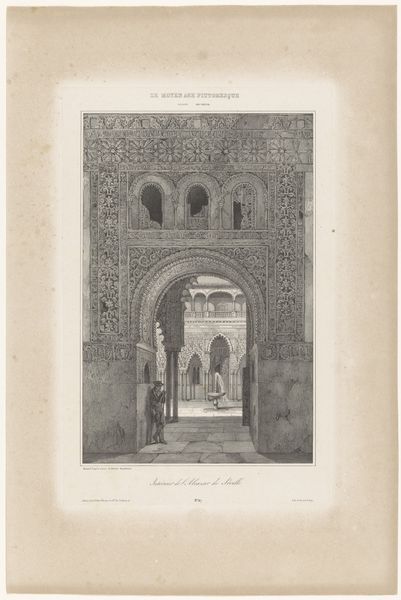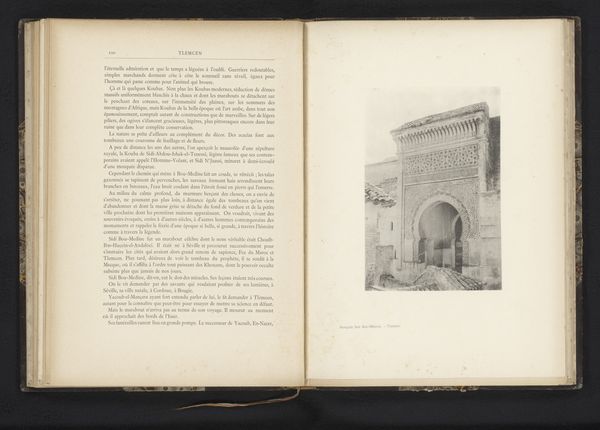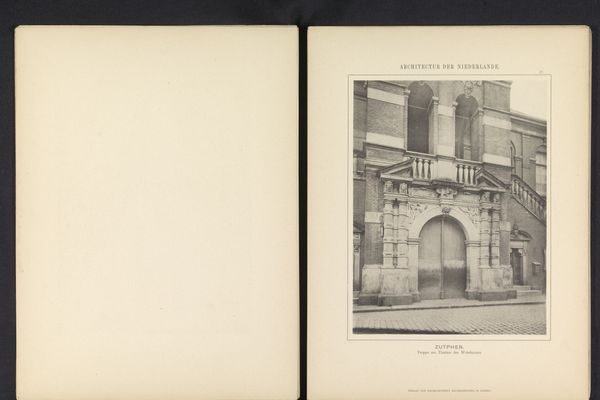
drawing, print, photography, graphite, architecture
#
drawing
# print
#
sketch book
#
photography
#
graphite
#
cityscape
#
architecture
#
realism
Dimensions: height 235 mm, width 186 mm
Copyright: Rijks Museum: Open Domain
Curator: Here we have "Ingang van het observatorium van een middelbare school in Stirling," a work from before 1889, attributed to an anonymous artist. It's presented as a page from a book, combining photography with graphite drawing techniques. Editor: The initial feel is weighty and imposing. The architecture looms, a sense of the institutional perhaps designed to inspire awe…or perhaps a bit of subservience? The meticulous stonework is very well depicted. Curator: That stonework really highlights the period's architectural trends. The blend of Gothic and early Renaissance elements in the ornamentation tells a story about aspiration and civic identity. It almost feels like an illuminated manuscript, with that photograph presented like some sacred diagram. Editor: And it makes me consider the physical labor that went into quarrying, transporting, and shaping those stones. Someone meticulously crafted those decorative details by hand. This institution stands as a monument to the societal values, but also, the exploitation of labor. The production matters. Curator: Certainly. One might consider the symbolism imbued into this place of learning: gateways, both physical and metaphorical. The astronomical observatories were perceived almost as sacred sites back then—linking earthly knowledge to cosmic truth. This entrance becomes a passage, promising revelation. Editor: Absolutely. And notice how the print-making process allows for dissemination on a massive scale! One single building replicated, copied and distributed, reinforcing its ideological significance far beyond its geographical bounds. Curator: Looking closer, the photographer and the school aimed to transmit values. What appears like "realism" actually represents a highly constructed cultural ambition that's being promoted and imprinted on the psyche through widespread availability. Editor: A stark reminder to look beyond surface appearances! To understand that stone, light and shadows carry profound implications in materials and methods, especially concerning power. Curator: It's remarkable how such a modest-seeming image prompts us to explore architecture and ideology as mutually informing narratives. Editor: I concur, this quiet image, almost subdued, roars with its implications about labour, access, and knowledge.
Comments
No comments
Be the first to comment and join the conversation on the ultimate creative platform.
